Potřebujeme váš souhlas k využití jednotlivých dat, aby se vám mimo jiné mohly ukazovat informace týkající se vašich zájmů. Souhlas udělíte kliknutím na tlačítko „OK“.
ASTM F2489-06(2013)
Standard Guide for Instrument and Precision Bearing Lubricants—Part 2 Greases
Automaticky přeložený název:
Standardní Průvodce pro nástroje a přesnost maziva pro ložiska & ndash; Part 2 tuky
NORMA vydána dne 15.9.2013
Informace o normě:
Označení normy: ASTM F2489-06(2013)
Poznámka: NEPLATNÁ
Datum vydání normy: 15.9.2013
Kód zboží: NS-53979
Počet stran: 13
Přibližná hmotnost: 39 g (0.09 liber)
Země: Americká technická norma
Kategorie: Technické normy ASTM
Kategorie - podobné normy:
Anotace textu normy ASTM F2489-06(2013) :
Keywords:
ball bearings, ester oil, instrument and precision bearing lubricants, mineral oil, perfluoropolyether oil, polyalphaolefins, silicon oil, pennzane, thickener, lubricating grease, ICS Number Code 75.100 (Lubricants, industrial oils and related products)
Doplňující informace
| Significance and Use | ||||||||||||||||||||||||||||||||||||||||||||||||||||||||||||||||||||
|
4.1 The purpose of this guide is to report on the testing of, to discuss and compare the properties of, and to provide guidelines for the choice of lubricating greases for precision rolling element bearings (PREB). The PREB are, for the purposes of this guide, meant to include bearings of Annular Bearing Engineer's Committee (ABEC) 5 quality and above. This guide limits its scope to lubricating greases used in PREB. 4.2 The number of lubricating greases used in PREB increased dramatically from the early 1940s to the mid 1990s. In the beginning of this period, petroleum products were the only widely available base stocks. Later, synthetic base oils became available. They included synthetic hydrocarbons, esters, silicones, multiply alkylated cyclopentanes (MAC) and fluorinated materials, including perfluorinated ethers and the fluorosilicones. This broad spectrum of lubricant choices has led to the use of a large number of different lubricants in PREB applications. The U.S. Department of Defense, as a user of many PREB, has seen a significant increase in the logistics effort required to support the procurement and distribution of these items. In addition, as time has passed, some of the greases used in certain PREB are no longer available or require improved performances due to advanced bearing technology/requirements. This implies that replacement lubricating greases must be found, especially in this era of extending the lifetime of DoD assets, with the consequent and unprojected demand for sources of replacement parts. 4.3 One of the primary goals of this study was to take a broad spectrum of the lubricating greases used in PREB and do a comprehensive series of tests on them in order that their properties could be compared and, if necessary, potential replacement greases be identified. This study is also meant to be a design guide for choosing lubricating greases for future PREB applications. This guide represents a collective effort of many members of this community who span the spectrum from bearing manufacturers, original equipment manufactures (OEMs), grease manufacturers and suppliers, procurement specialists, and quality assurance representatives (QARs) from DoD and end users both inside and outside DoD. 4.4 It is strongly recommend that, prior to replacing a grease in a PREB, all of the existing grease should be removed from the bearing. Reactions may occur between incompatible greases resulting in severely degraded performance. When users have more than one type of grease in service, maintenance practices must be in place to avoid accidental mixing of greases. In addition, all fluids used specifically to prolong storage life of PREBs (preservatives) should be removed prior to lubricating the bearings. Reactions may occur which would degrade the grease. 4.5 The base oils, thickeners, and additives dictates grease performances. The properties of many base oils can be found in the previous study (Guide F2161). This study included a discussion of elastohydrodynamic lubrication theory. |
||||||||||||||||||||||||||||||||||||||||||||||||||||||||||||||||||||
| 1. Scope | ||||||||||||||||||||||||||||||||||||||||||||||||||||||||||||||||||||
|
1.1 This guide is a tool to aid in the choice of lubricating grease for precision rolling element bearing applications. The recommendations in this guide are not intended for general purpose bearing applications There are two areas where this guide should have the greatest impact: (1.2 The lubricating greases presented in this guide are commonly used in precision rolling element bearings (PREB). These greases were selected for the testing based on the grease survey obtained from DoD, OEM and grease manufactures and evaluated according to the test protocol that was designed by Subcommittee F34 on Tribology. This test protocol covers the essential requirements identified for precision bearing greases. The performance requirements of these greases are very unique. They are dictated by the performance expectations of precision bearings including high speed, low noise, extended life, and no contamination of surrounding components by the bearing’s lubricant system. To increase the reliability of test data, all tests were performed by a DoD laboratory and three independent testing laboratories. There were no grease manufacturer’s data imported except for base oil viscosity. Most of tests were performed by U.S. Army Tank–Automotive Research, Development and Engineering Center (TARDEC) and three independent laboratories, and the results were monitored by the Naval Research Laboratory (NRL). This continuity of testing should form a solid basis for comparing the properties of the multitude of lubricating greases tested by avoiding some of the variability introduced when greases are tested by different laboratories using different or even the “same” procedures. Additional test data will be considered for inclusion, provided the defined protocol is followed and the tests are performed by independent laboratories. 1.3 This study was a part of DoD Aging Aircraft Replacement Program and supported by Defense Logistic Agent (DLA) and Defense Supply Center Richmond (DSCR).1.4 The values stated in inch-pound units are to be regarded as standard. No other units of measurement are included in this standard. 1.5 This standard does not purport to address all of the safety concerns, if any, associated with its use. It is the responsibility of the user of this standard to establish appropriate safety and health practices and determine the applicability of regulatory limitations prior to use. |
||||||||||||||||||||||||||||||||||||||||||||||||||||||||||||||||||||
| 2. Referenced Documents | ||||||||||||||||||||||||||||||||||||||||||||||||||||||||||||||||||||
|
Podobné normy:
Historická
1.5.2014
Historická
1.5.2013
Historická
1.5.2013
Historická
1.5.2014
Historická
1.5.2014
Historická
1.10.2013
Doporučujeme:
Aktualizace technických norem
Chcete mít jistotu, že používáte pouze platné technické normy?
Nabízíme Vám řešení, které Vám zajistí měsíční přehled o aktuálnosti norem, které používáte.
Chcete vědět více informací? Podívejte se na tuto stránku.



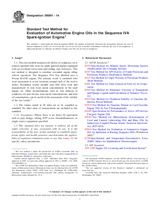 ASTM D6891-14
ASTM D6891-14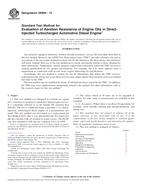 ASTM D6894-13
ASTM D6894-13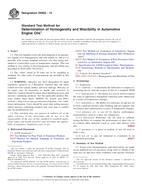 ASTM D6922-13
ASTM D6922-13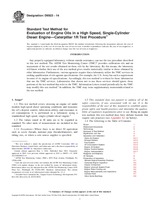 ASTM D6923-14
ASTM D6923-14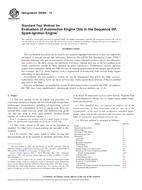 ASTM D6984-14
ASTM D6984-14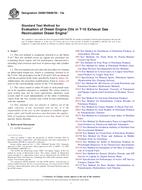 ASTM D6987/D6987M-13..
ASTM D6987/D6987M-13..
 Cookies
Cookies
